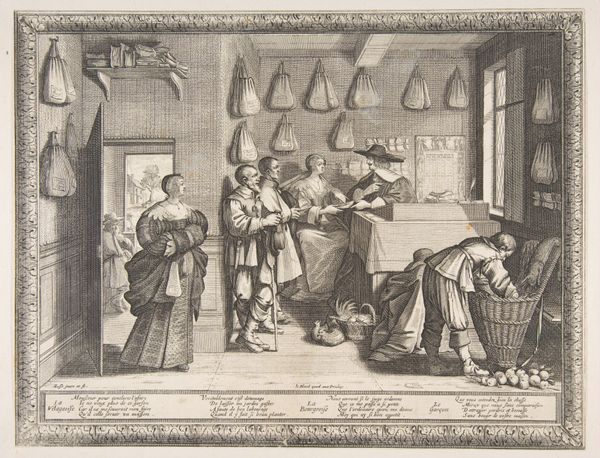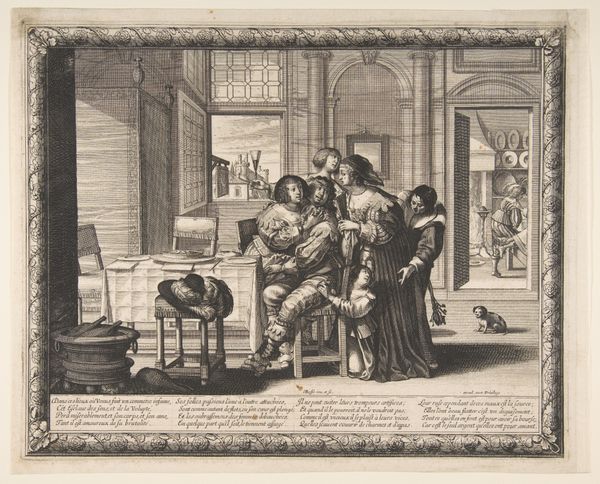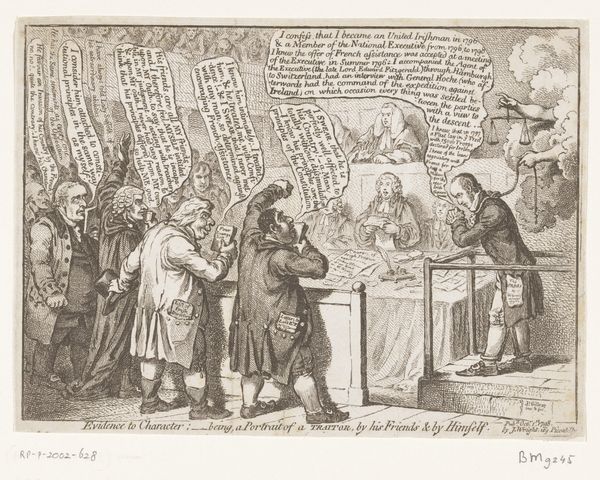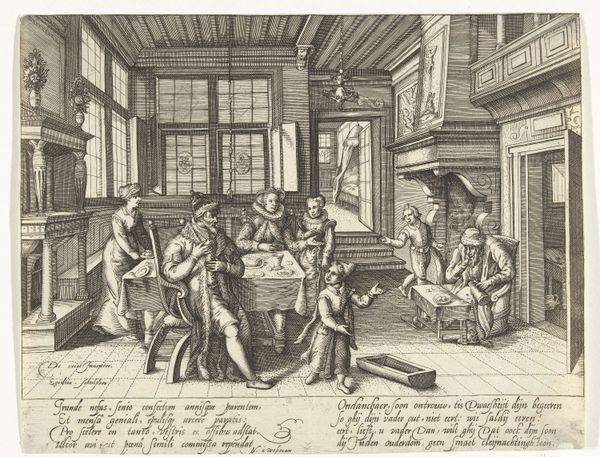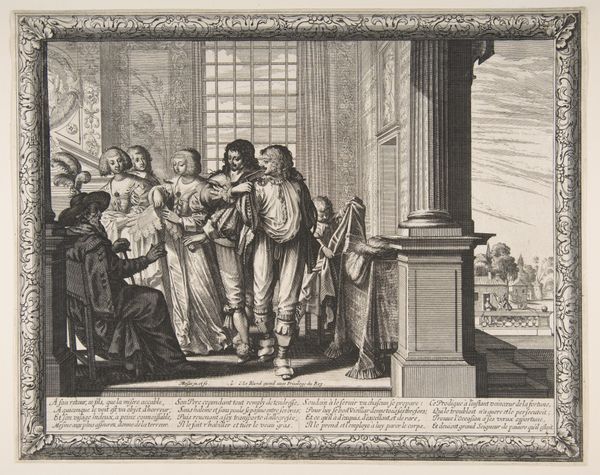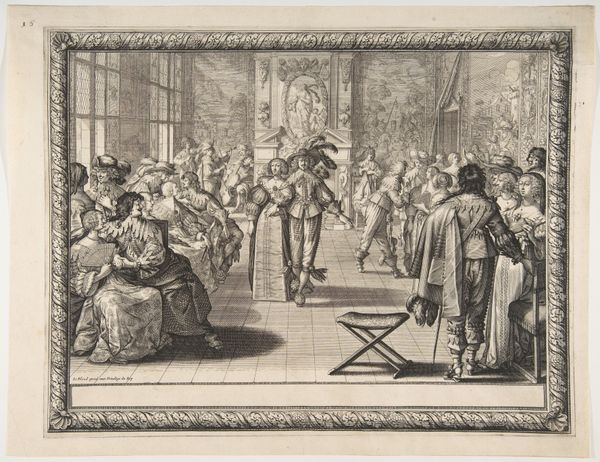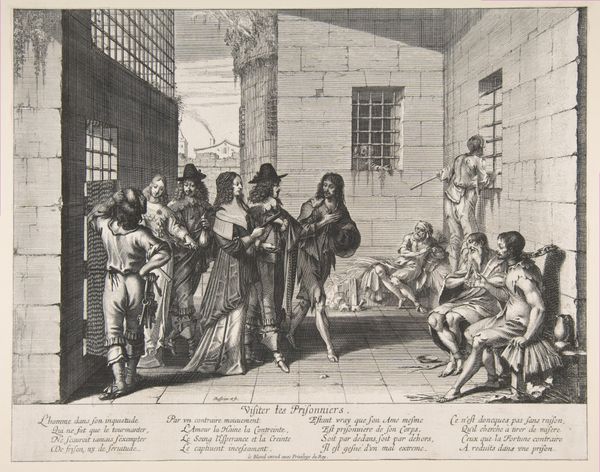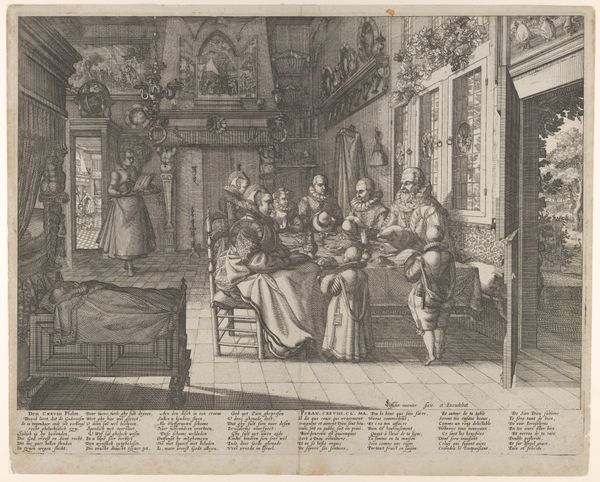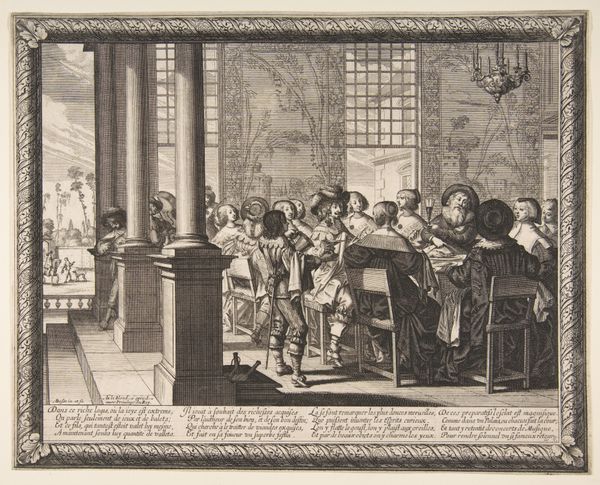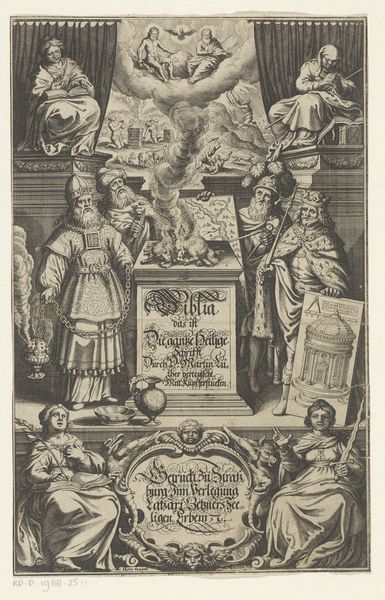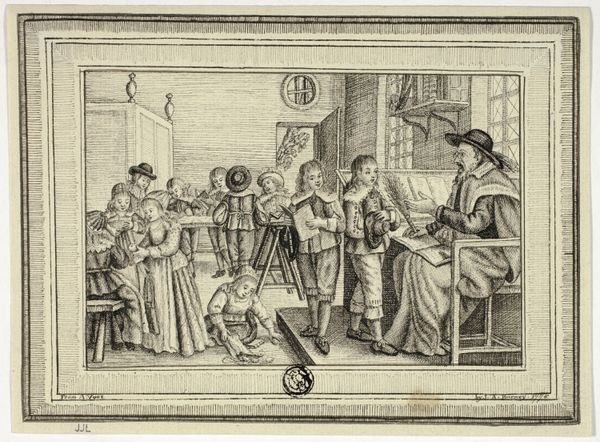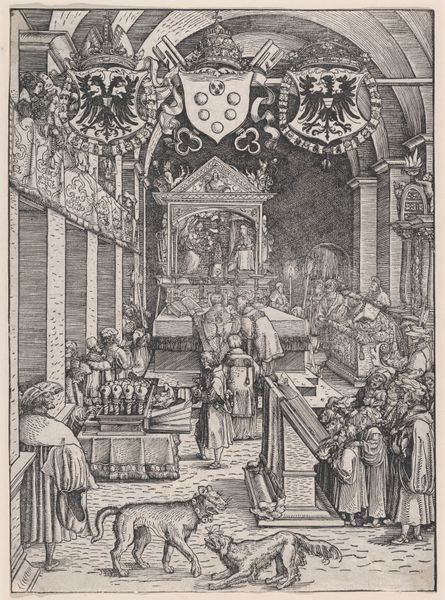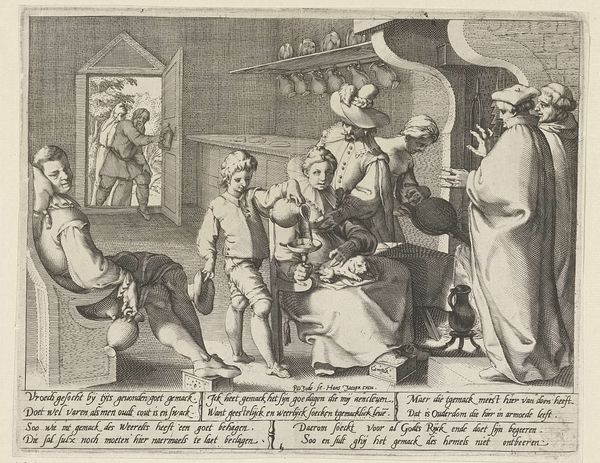
Wives at Table During the Absence of Their Husbands 1630 - 1641
0:00
0:00
drawing, print
#
portrait
#
drawing
#
narrative-art
#
baroque
# print
#
figuration
#
line
#
genre-painting
#
history-painting
#
realism
Dimensions: Sheet (trimmed): 10 1/4 × 13 3/8 in. (26 × 34 cm)
Copyright: Public Domain
Curator: This is Abraham Bosse’s etching, “Wives at Table During the Absence of Their Husbands,” created sometime between 1630 and 1641. Editor: My initial impression is of subdued festivity. It’s a detailed domestic interior, rendered entirely in these intricate, almost scientific lines. What’s immediately striking is the contrast between the active dinner table and the rather monumental stillness of the room around them. Curator: Bosse was meticulous in depicting the textures and furnishings. Note the heavy drapery, the fine silverware, even the lapdogs under the table – they are all meticulously rendered through precise engraved lines. Bosse was very interested in representing the burgeoning mercantile wealth of 17th century France through the accurate depiction of material objects. Editor: Exactly, the print becomes an archive of early modern European luxury. But beyond the shimmering surfaces, I think there is a critical layer. It's the "absence" that really defines this piece, isn't it? The absent husbands—where are they? Curator: Likely engaged in trade or perhaps even war, essential pillars upholding that very lavish lifestyle the women enjoy here. Bosse subtly acknowledges that these domestic comforts were contingent upon male activity and labor occurring elsewhere, often out of sight. The abundance on display only exists because of what is not. Editor: So we are presented with an image of bourgeois women enjoying material comforts purchased through patriarchal, economic, and possibly colonial trade networks. And considering this from a contemporary perspective, it makes you think about consumerism, labor exploitation, and what “absence” means today. What labor makes our tables bountiful? Curator: Yes! By considering the means through which the scene itself is produced, in terms of the materials Bosse employed but also the historical forces, we begin to unlock other stories beyond the image’s immediate appeal. We could even analyse the economics of Bosse’s printmaking enterprise. Editor: That's where the true richness lies. I see that reflected not only in the opulence depicted but also in our critical task of examining how social structures have influenced the production and circulation of artworks like this print. Curator: I agree; the power is truly revealed when we bring into play these contemporary discourses about material analysis. Editor: Precisely. This detailed and descriptive image ultimately poses bigger questions about access, value and exploitation across time and cultures.
Comments
No comments
Be the first to comment and join the conversation on the ultimate creative platform.
